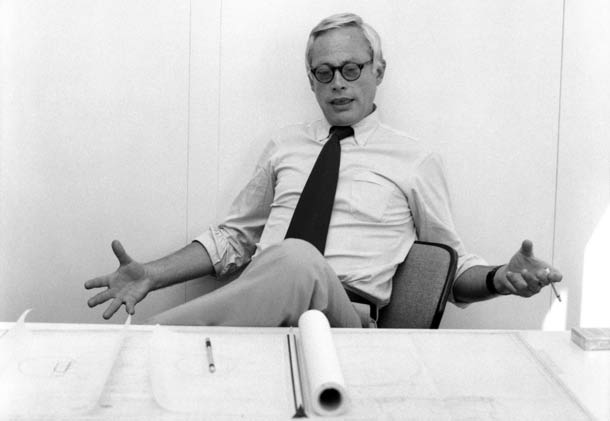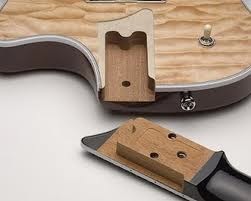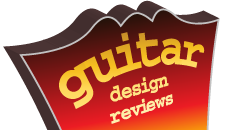The ten principles of guitar design, Part 1, Innovation
Dieter Rams is a very well-known German Industrial Designer, famous for his work with Braun and considered to be in the “Functionalist” school. You’ve no doubt seen examples of his work, and may have even used some of the products he’s designed. At one point in his career, he asked himself whether or not his work constituted “good design”. To help him evaluate his own work, he formulated 10 guiding principles of good design against which he’d review his designs.

These 10 principles have become a popular topic amongst designers, although in the end they are just one person’s opinion on what’s good and what’s not. You may or may not appreciate his work, but you’d probably agree that he knows something about what he’s talking about and that the principles are useful in evaluating designs.
Let’s then take his 10 Principles and see how they might apply to the subject of Guitar Design. For the purposes of this series, we’ll take them in their original order with the assumption that they aren’t ranked in terms of importance over or under any other Principle. That way we’ll have something else to contemplate after we’ve batted these ideas around for a while.
Principle #1:
Good design is innovative.
“The possibilities for innovation are not, by any means, exhausted. Technological development is always offering new opportunities for innovative design. But innovative design always develops in tandem with innovative technology, and can never be an end in itself.”
We’re off to a good start. There’s optimism in the first two sentences, indicating that there’s an abundance of things that we’ll be able to innovate with in the future and that not everything has been done yet. We’ll circle back to the last sentence in just a bit.
Definition of “Innovation”
My computer provides a short definition:
make changes in something established, esp. by introducing new methods, ideas, or products.
If good design is innovative, then we can restate the principle by saying that good design takes something that already exists and changes it using something new. A good guitar design, then, takes our existing guitars and transforms them in a way that hasn’t been done before.
The Wikipedia entry elaborates on the definition:
Innovation differs from invention in that innovation refers to the use of a new idea or method, whereas invention refers more directly to the creation of the idea or method itself.
This difference between Innovation and Invention is important, and I think that often we confuse the two. For the purposes of this article, I think we can stipulate that the guitar was invented a long time ago. You could argue that it was an innovative adaptation of other stringed instruments, but for now, let’s just go with that. The net result is that we’re probably not going to invent the guitar again. We do, however, have lots of opportunities to innovate and change the guitar as it exists today.
A lot of print has been devoted to the origins of the electric solidbody guitar and determining exactly who invented it first. If you apply this definition, though, you could say that the electric solidbody guitar was not an invention per se, but really an example of innovation instead.
In other words:
Invention: The magnetic pickup (even that’s debatable)
Innovation: Installed in a solid body

Other examples of invention and resulting innovation:
Carbon Fiber, CF bicycle frames
Velcro, Hook & Loop sandpaper
Innovating to Solve Constraint problems
It’s been said that Necessity is the Mother of Invention. So what would be the Mother of Innovation? It could be as simple as an idea looking for an implementation, kind of like a solution in search of a problem. It’s natural to find something new and then try to figure out how you could use it.
It can also be that we look for innovation to solve problems that are caused by constraints issues. A designer may struggle with how to design around a particular problem and identify a solution that may or may not exist yet. In other words, “If I only had X, then I could do Y.” We’ve seen examples of this in the past:
Time/Money/Skills
Manufacturers are always looking for ways to make things faster, for less money, and with less-skilled labor. One way to accomplish this is through simplification. This is the classic Leo Fender approach, leveraging what were then considered modern manufacturing techniques developed in other industries to the design and construction of electric guitars.


Tools
Similar to the way the Pin Router was used to innovate new guitar designs, the CNC process has also innovated guitar designs. The equipment allows designers to create concepts that would have been far more difficult using older manufacturing techniques, if at all. You see it manifested in new shapes, contours, and precision surfaces. Taylor guitars are a great example of how the invention of CNC has promoted innovation in guitar design and construction.
Materials
The aerospace industry has a knack for developing new technologies and materials, and eventually those find their way into guitars. An example would be the use of Carbon Fibre reinforcement and composite materials as bracing or as alternatives to wooden parts. As traditional materials become more scarce and expensive, we can expect to see new guitars designed to take advantage of new materials as they’re developed.
The Second Third Sentence
The process of innovation shouldn’t be an end in itself, at least according to the principle. Another way to put it is “Don’t do it just because you can.” If the innovation doesn’t make something better, just different, then it really can’t be considered to be a good overall design.
Let’s consider the example of RKS Guitars, as unfair as it may be to pick on them. They developed a line of electric guitars designed and manufactured using modern 3D technologies. This could legitimately be considered as an innovation in electric guitar design. They were, in my opinion, very attractive and I’m sure that they played just fine. I always wondered, though, if they were really any better than other instruments at competitive price points. Was it just a case of designing something in a way simply because they could?

But what about unintended consequences of a particular design? You don’t always know how something is going to get used until it’s out there in the hands of players. Guitar amplifier designers learned this when players discovered the joys of distortion. There may be some value in applying a particular innovation to guitar design and seeing what becomes of it.

One thought on “The ten principles of guitar design, Part 1, Innovation”